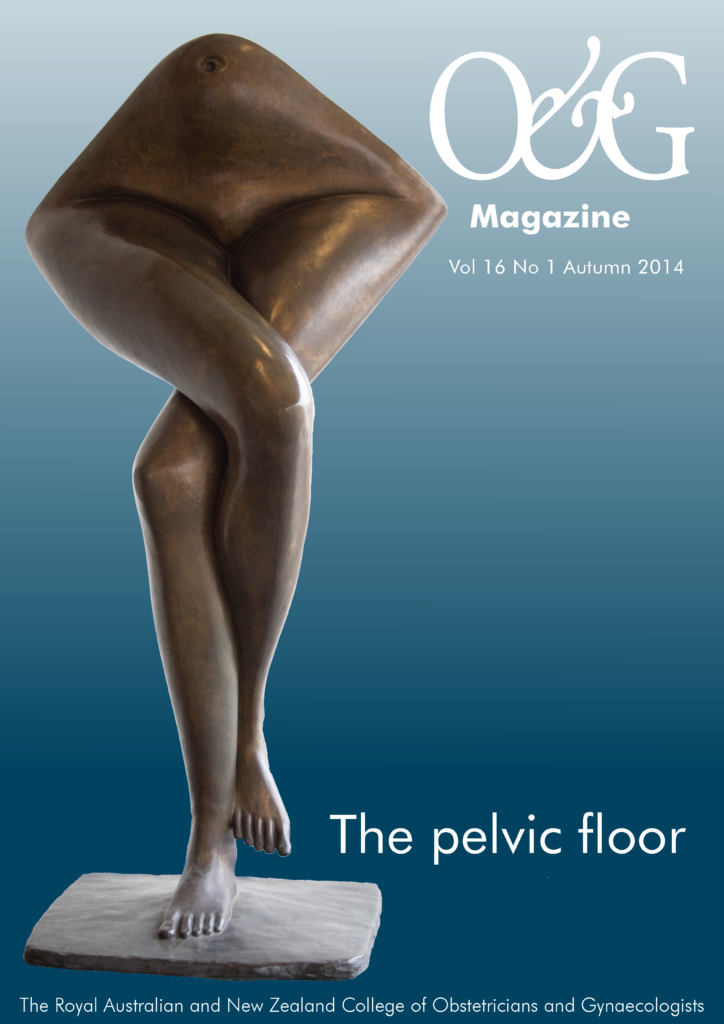Is it severe pre-eclampsia or acute fatty liver of pregnancy?
Liver dysfunction during pregnancy is a well-established complication of pre-eclampsia and its variant HELLP (haemolysis, elevated liver function, low platelets) syndrome. However, its clinical characteristics and laboratory findings bear similarities to acute fatty liver of pregnancy (AFLP), a rare metabolic disorder that is associated with high perinatal and maternal morbidity and mortality. As such, it poses a diagnostic challenge to the obstetrician and physician. In this article, we describe our experience with a woman who recently came in with a clinical presentation of severe pre-eclampsia, with a strong differential diagnosis of AFLP (or vice versa).
Case study
A 28-year-old Caucasian woman, gravidity 2 parity 0, presented at 34+5 weeks gestation with a three-day history of feeling unwell, with nausea, polydipsia and generalised abdominal pain not confined to the epigastrium. She complained of headaches with some blurred vision. The date of her confinement was based on an early dating scan and her antenatal care had been uncomplicated. She had a BMI of 29kg/m2, and she had previously undergone a dilation and curettage for a miscarriage.
On examination, she had drooping eyelids and appeared drowsy, but was orientated to time, place and person. She remained afebrile with a blood pressure of 130/90mmHg. She was not clinically jaundiced. Her uterus was soft and her reflexes were brisk with one beat of clonus bilaterally. There was no evidence of a rash or bleeding. Urinalysis revealed 2+ protein, 2+ blood and 1+ leukocytes. Cardiotocography (CTG) remained reassuring, with no evidence of fetal compromise.
Her bloods on presentation showed an inflammatory response with deranged liver function (see Table 1). Her urine protein/creatinine ratio was 122mg/mmol (cut-off level of 30mg/mmol in pregnancy).
A diagnosis of severe pre-eclampsia with a differential of acute fatty liver was made and delivery was initiated. She was commenced on magnesium sulphate infusion. An emergency caesarean section was performed under spinal anaesthesia and a live male fetus weighing 2450g was delivered, with Apgar scores of four, eight and ten at one, five and ten minutes, respectively. The neonate was admitted to NICU, owing to prematurity and respiratory distress. The umbilical cord gases values are presented in Table 2.
Post-operatively our patient was admitted to intensive care for supportive management. She was discharged back to the labour ward after five hours for further monitoring. Her liver dysfunction, metabolic acidosis and renal impairment slowly improved. She was noted to have polyuria, a diuresis of >250ml urine per hour with total urine output >3600ml in 24 hours. Despite being on fluid restriction, her polydipsia persisted, which led to her increased oral intake without midwifery knowledge. She developed generalised oedema and hyponatraemia, likely secondary to her hypervolaemic and hypoalbuminaemic state. She recovered well without any further intervention and was discharged home on day seven postpartum. Her son made good progress and was discharged from the nursery at day 18 of life.
At her review in the postnatal clinic six weeks later, she was well, with her blood investigations completely normalised. Viral serologies and thrombophilia screening were negative. Placental histopathology showed mild increase of peri-villous fibrin and calcification, with no evidence of maternal vessel abnormalities.
Table 1. The patient’s laboratory findings on presentation.
| Value | Normal range | Value | Normal range | ||
|---|---|---|---|---|---|
| Haemogloblin g/L | 146 | (120-160) | ALT U/L | 1017 | (5-34) |
| Platelets 10^9/L | 143 | (140-440) | AST U/L | 712 | (10-35) |
| White cell count 10^9/L | 18.0 | (4.0-11.0) | GGT U/l | 92 | (7-32) |
| Neutrophils 10^9/L | 14.4 | (2.0-7.5) | ALP U/L | 403 | (42-98) |
| Sodium mmol/L | 132 | (136-145) | Albumin g/L | 25 | (33-45) |
| Potassium mmol/L | 4.5 | (3.5-5.1) | Bilirubin umol/L | 57 | (0-21) |
| Chloride mmol/L | 105 | (98-108) | LDH u/L | 1180 | (125-243) |
| Bicarbonate mmol/L | 14 | (23-29) | Uric acid mmol/L | 0.55 | (0.15-0.36) |
| Glucose mmol/L | 4.2 | (3.5-7.9) | INR | 1.1 | (0.9-1.1) |
| Creatinine mmol/L | 107 | (50-107) | APTT seconds | 36 | (23-35) |
| Urea mmol/L | 5.3 | (2.5-6.4) | PT seconds | 13 | (11-13) |
Table 2. Umbilical cord gases values.
| Arterial | Venous | |
| pH | 6.83 | 6.83 |
| pCO2 (mmHg) | 105 | 92 |
| pO2 (mmHg) | 6 | 7 |
| Lactate (mmol/L) | 11.4 | 10.3 |
| Base excess (mmol/L) | -19.3 | -18.6 |
| HCO3- (mmol/L) | 17.5 | 17.2 |
Table 3. Swansea diagnostic criteria for diagnosis of acute fatty liver of pregnancy.1
| Six or more of the following features, in the absence of another explanation. |
|
Review
Both pre-eclampsia and AFLP are serious maternal illnesses occurring in the third trimester of pregnancy and remain a medical and obstetric emergency. While the former is relatively common, with an incidence of 1:900–2000 pregnancies, AFLP is rather rare, with an incidence value of 1:7000–19,000 pregnancies.1 It was first described in 1934, by Stander and Cadden, as ‘acute yellow atrophy of the liver’ and defined as microvesicular fatty infiltration of hepatocytes during the latter half of pregnancy.2 It is more common in first and multiple pregnancies and there is a higher incidence associated with male fetuses (3:1 ratio).3 The pathogenesis of AFLP is not known, however, it has been reported to be associated with an inherited deficiency of long chain 3-hydroxyacetyl coenzyme-A dehydrogenase (LCHAD), a mitochondrial enzyme that catalyses a reaction in the β-oxidation of fatty acids.2-4 A deficiency in this enzyme therefore allows the build-up of long chain fatty acids, leading to metabolic toxaemia. Interestingly, this association has also been linked to HELLP syndrome in case studies.5 Pre-eclampsia has also been reported to be present in half of all AFLP cases.6 As such, some authors have argued that both AFLP and pre-eclampsia/HELLP syndrome may all be a spectrum of the same disease, given the difficult clinical and biochemical distinction between the two disorders.
The diagnosis of pre-eclampsia is well guided by the SOMANZ guidelines and will not be discussed here.7 Diagnosis of AFLP, on the other hand, is assisted by the Swansea criteria (see Table 3), which were systematically assessed with positivity in the largest UK population-based cohort study for this liver disorder.8 Clinical features may include malaise, nausea and vomiting, epigastric pain and jaundice. Hypertension and proteinuria may be present as well.9 The relationship between diabetes insipidus and AFLP is well established; however, this phenomenon has also been associated with HELLP syndrome in a case report, which is rare.10 It is thought that liver dysfunction impairs degradation of placental vasopressinase activity.11 Higher levels of this enzyme further inactivates antidiuretic hormone (ADH), leading to excretion of a large amount of diluted urine as well as excessive thirst. Biochemical studies are the hallmark of AFLP and the majority of women have raised liver transaminases, white cell count, uric acid and bilirubin levels.8,9,12 Hypoglycemia is not always seen and its presence is a poor prognostic sign.2 Viral serologies are mandatory to exclude acute infection. A liver biopsy may facilitate the definite distinction between AFLP and HELLP syndrome, but this is not always performed, owing to concerns regarding fulminating coagulopathy.9 Imaging, such as computed tomography, may identify microvesicular fatty infiltration in AFLP, however, this is not always present. In the setting of severe pre-eclampsia, imaging may reveal hepatic rupture or subcapsular haematoma.2,9 Our patient presented at midnight during a long weekend, her condition improved after delivery and therefore further imaging was deemed unnecessary for ongoing management.
Despite a diagnostic dilemma, the main principle of treatment for both AFLP and HELLP syndrome is expedited delivery, as well as supportive therapy. Maternal mortality rates for ALFP have dropped from 70 per cent to ten per cent, thanks to better recognition, intensive measures and prompt stabilisation.9 Despite this, maternal morbidity remains high and the clinician should be watchful for complications, including disseminated intravascular coagulopathy, renal failure, pancreatitis and coma. Liver transplantation for liver failure has also been reported.13 Women with a previous history of AFLP should be monitored in a maternal-fetal medicine unit as this liver disorder may re-present in subsequent pregnancies, even if they do not have the LCHAD mutation. A blood test for LCHAD genetic testing was requested for our patient, but was rejected as it was expensive (>$250) and fell outside the Medicare rebate scheme. The exact risk of recurrence for AFLP is not known. Therefore, acquiring a positive (or negative) result may be a novelty finding, rather than of any predictive relevance.
Conclusion
Severe liver disease in pregnancy encompasses a spectrum of different aetiologies and pathogenesis, with both severe pre-eclampsia/HELLP syndrome and AFLP recognised as fatal multi-organ dysfunctions that are unique to pregnancy. The clinical presentation of, and laboratory findings in, these disorders may overlap, allowing a potential delay in diagnosis and, subsequently, delaying prompt intervention for these women. Therefore, it is important that a multidisciplinary approach – with obstetricians, anaesthetists, physicians and intensivists – is part of the management of these women, preferably in a tertiary setting with access to blood bank and appropriate imaging. Owing to the uncommon nature of these conditions during pregnancy, the available evidence from the literature to guide any particular line of treatment includes case series and a handful of population cohort studies from around the world. Further studies such as the Australasian Maternity Outcomes Surveillance System (AMOSS), a national surveillance research system for serious and rare conditions in pregnancy, will be useful to understand the incidence and demographics of these disorders, especially in Australia.
References
- Ch’ng CL, Morgan M, Hainsworth I, Kingham JGC. Prospective study of liver dysfunction in pregnancy in Southwest Wales. Gut.2002;51:876-880.
- Joshi D, James A, Quaglia A, Westbrook RH, Heneghan MA. Liver disease in pregnancy. The Lancet. 2010;375: 594-605.
- Bacq Y. Acute fatty liver of pregnancy.UpToDate. Accessed online November 2013.
- Riely CA. Liver Disease in the Pregnant Patient. The American Journal of Gastroenterology. 1999;94(7):1729-32.
- Wilcken B, Leung K-C, Hammond J, et al. Pregnancy and fetal longchain 3-hydroxyacyl coenzyme A hydrogenase deficiency. The Lancet.1993;341:407-8.
- Riely C. Acute fatty liver of pregnancy. Sem Liv Dis. 1987;7:47-54
- Lowe SA, Brown MA, Dekker GA, et al. Guidelines for the management of hypertensive disorders of pregnancy 2008. ANZJOG.2009;49:242-246.
- Knight M, Nelson-Piercy C, Kurinczuk JJ, Spark P and Brocklehurst P. A prospective national study of acute fatty liver of pregnancy in the UK. Gut. 2008; 57: 951-956.
- Sibai BM. Imitators of Severe Pre-eclampsia. Semin Perinatol. 2009;33:196-205.
- Woelk JL, Dombroski RA, Brezina PR. Gestational diabetes insipidus, HELLP syndrome and eclampsia in a twin pregnancy: a case report Journal of Perinatology. 2010;30:144-145.
- Barbey F, Bonny O, Rothuizen L, Gomez F, Burnier M. A pregnant woman with de novo polyuria-polydipsia and elevated liver enzymes.Nephrol Dial Transplant. 2003;18: 2193-2196.
- Hague WM, Fenton DW, Duncan SLB, et al. Acute fatty liver of pregnancy. Journal of the Royal Society of Medicine. 1983; 76:652-661.
- Ockner SA, Brunt EM, Cohn SM, et al. Fulminant hepatic failure caused by acute fatty liver of pregnancy treated by orthotopic liver transplantation. Hepatology. 1990;11:59-64.







Leave a Reply